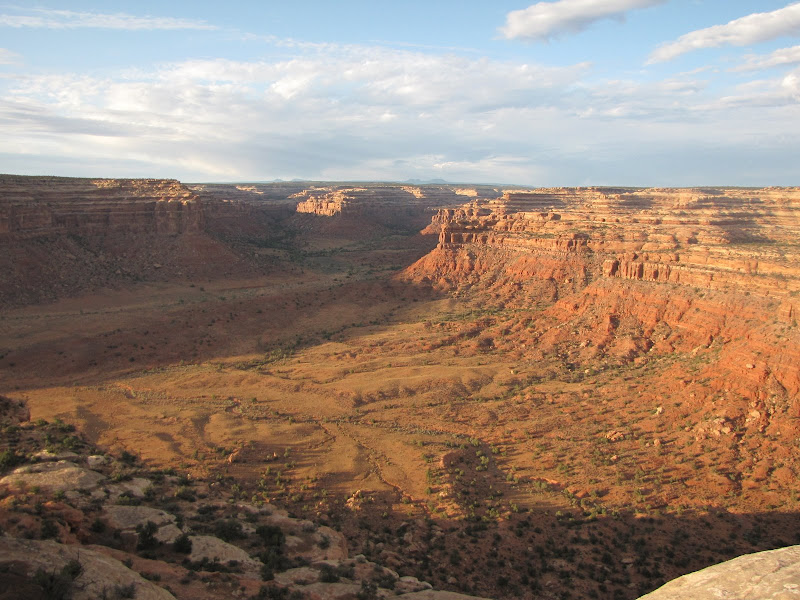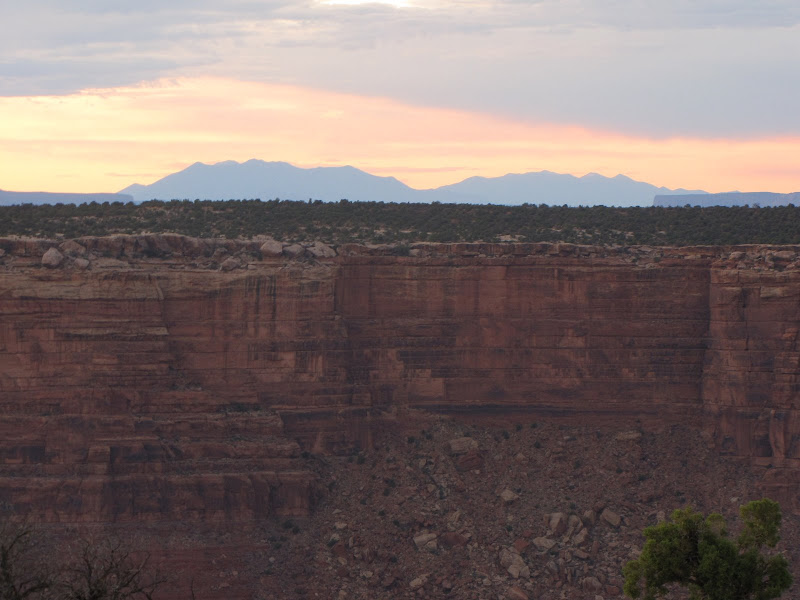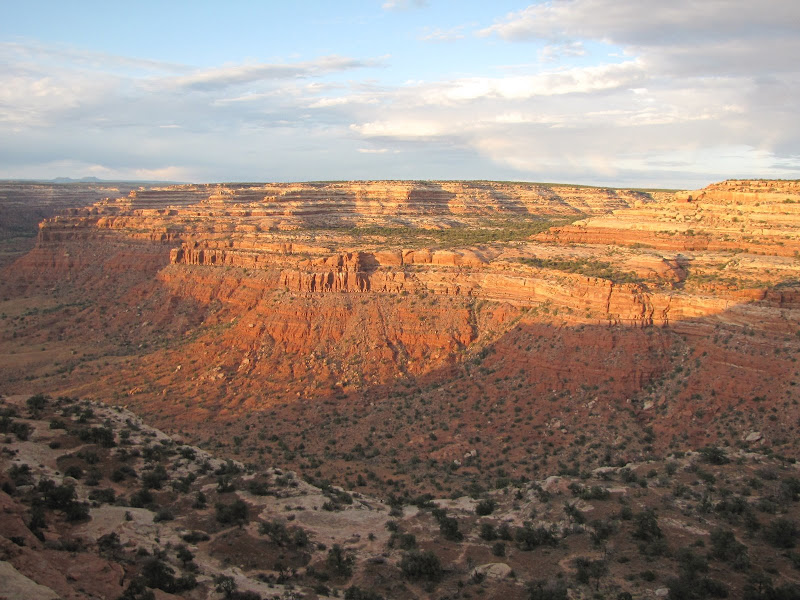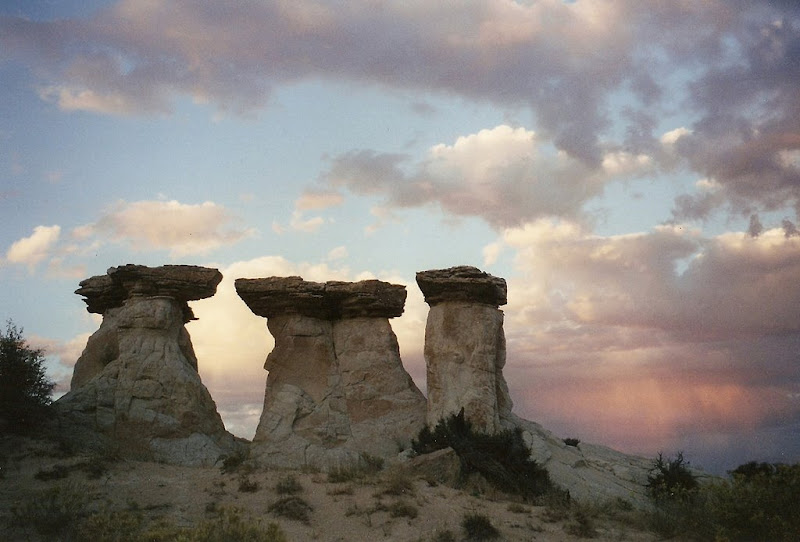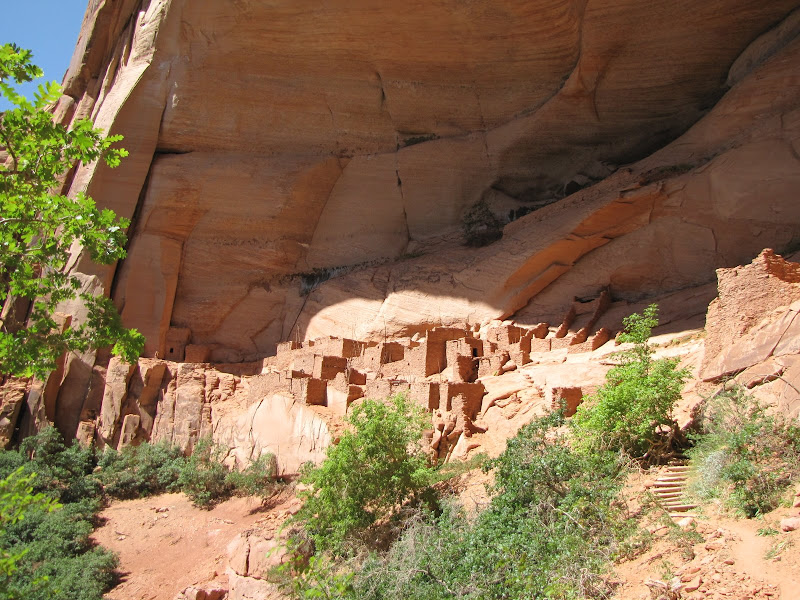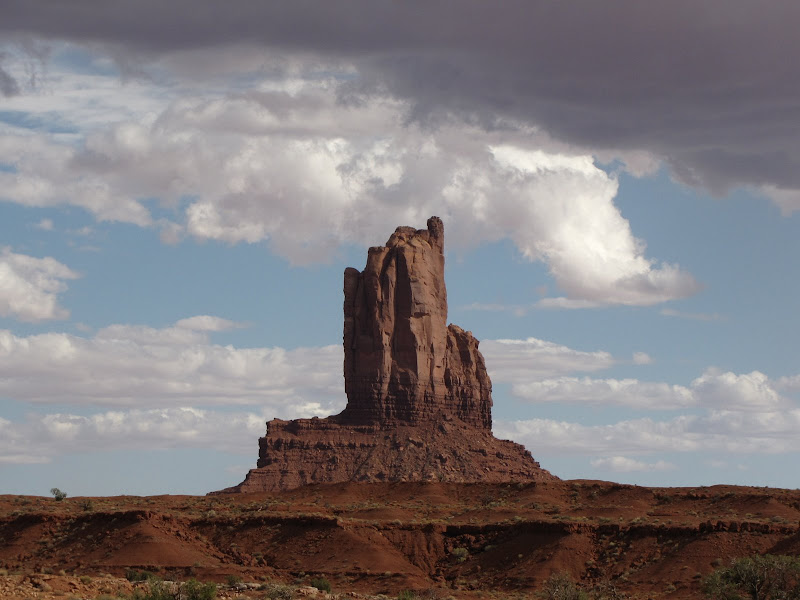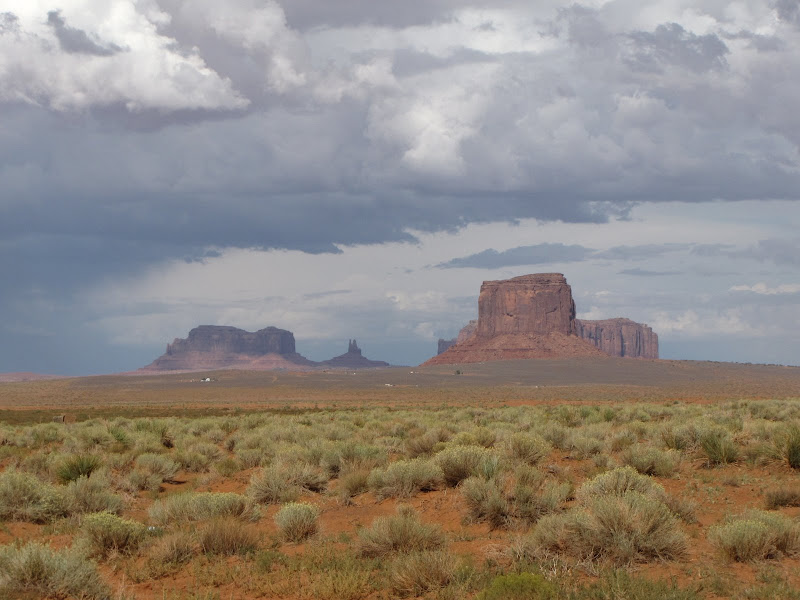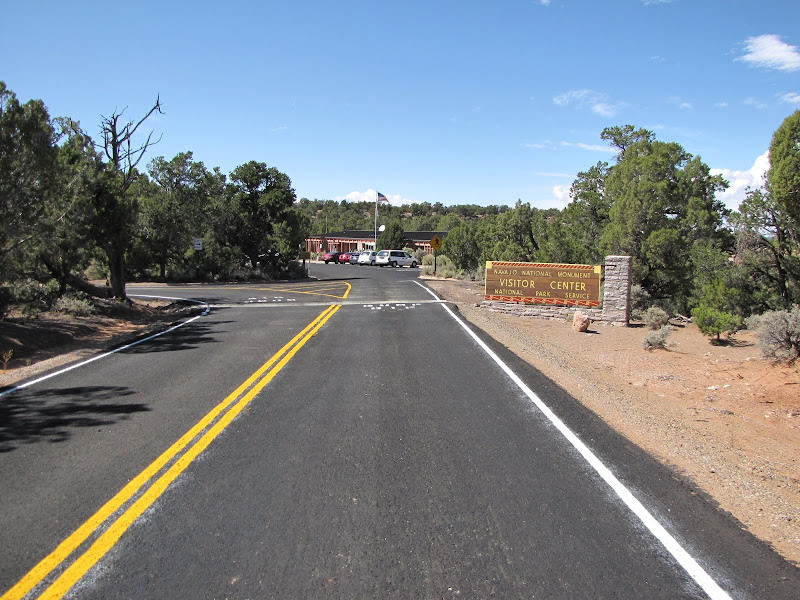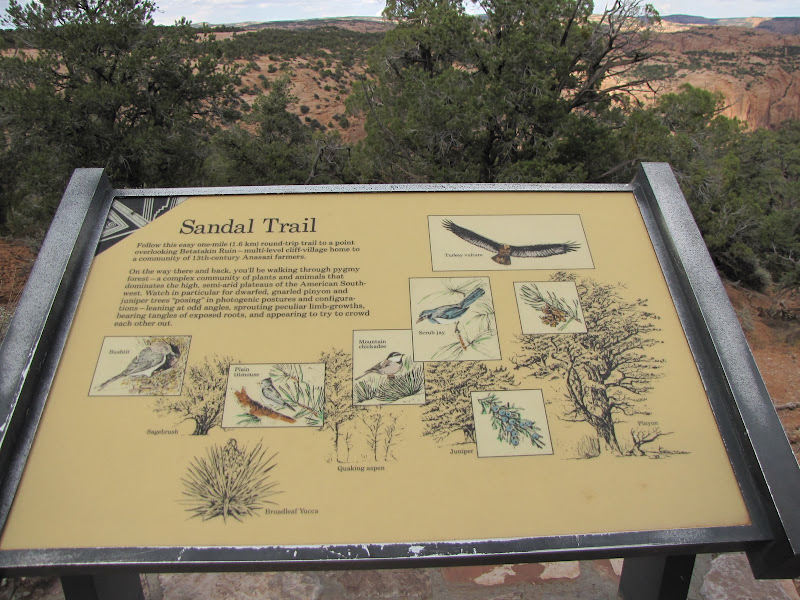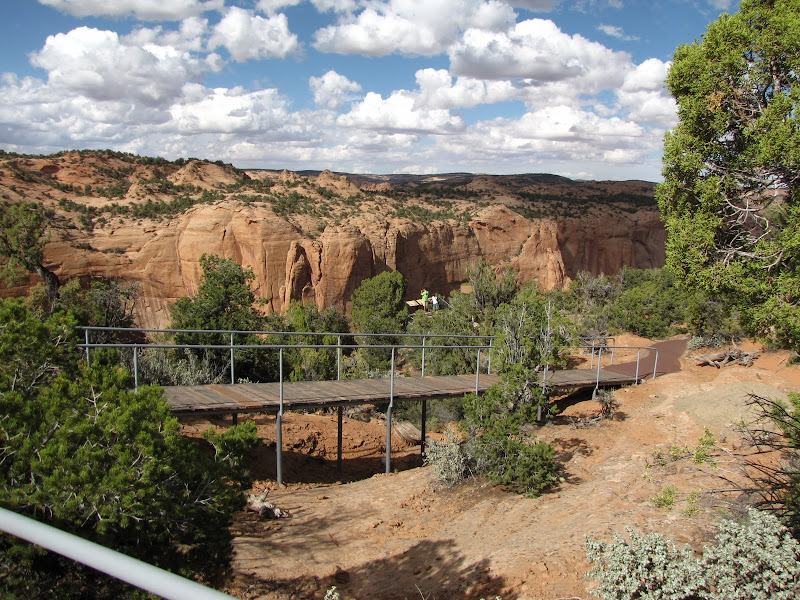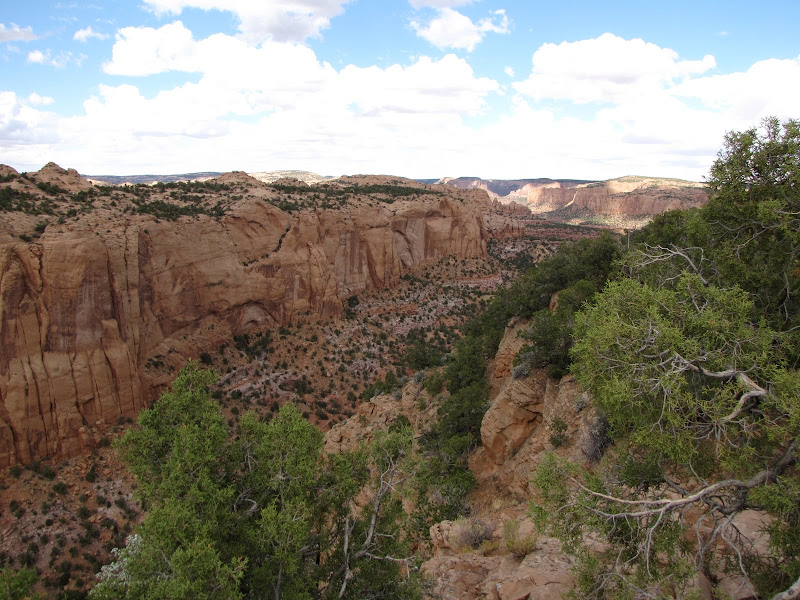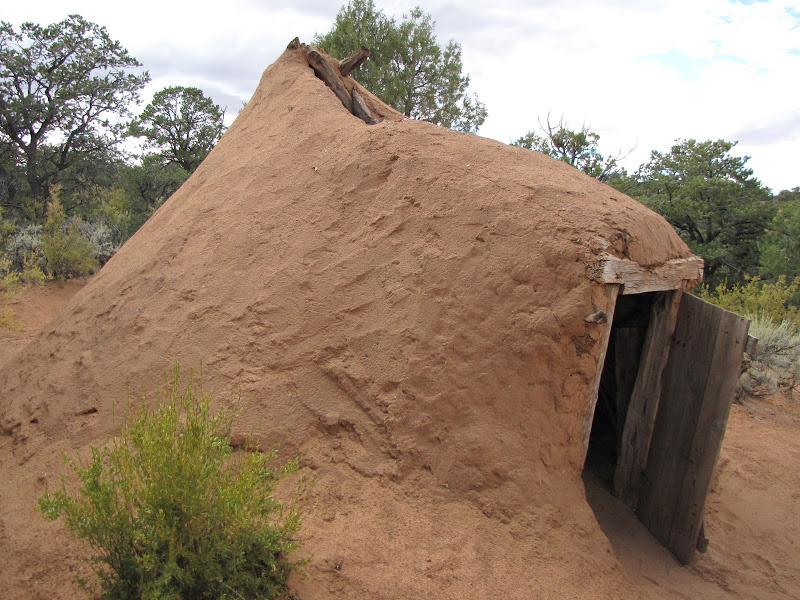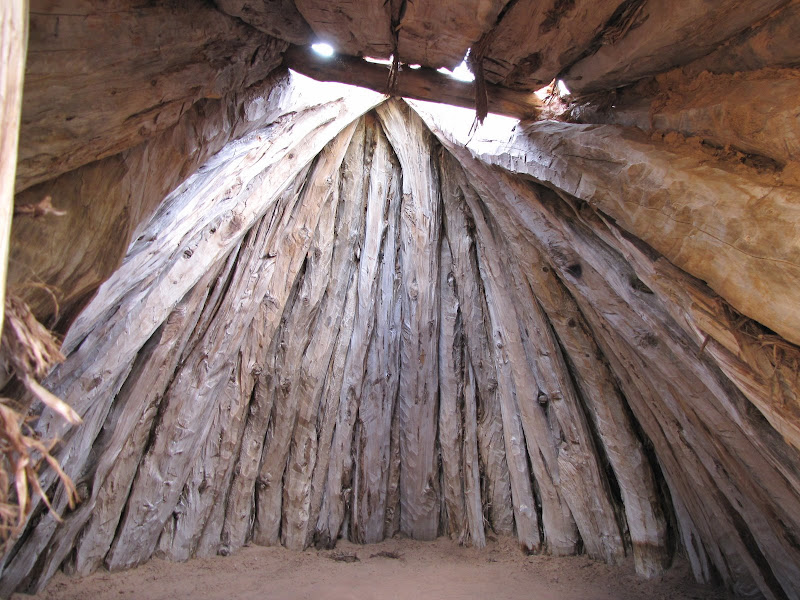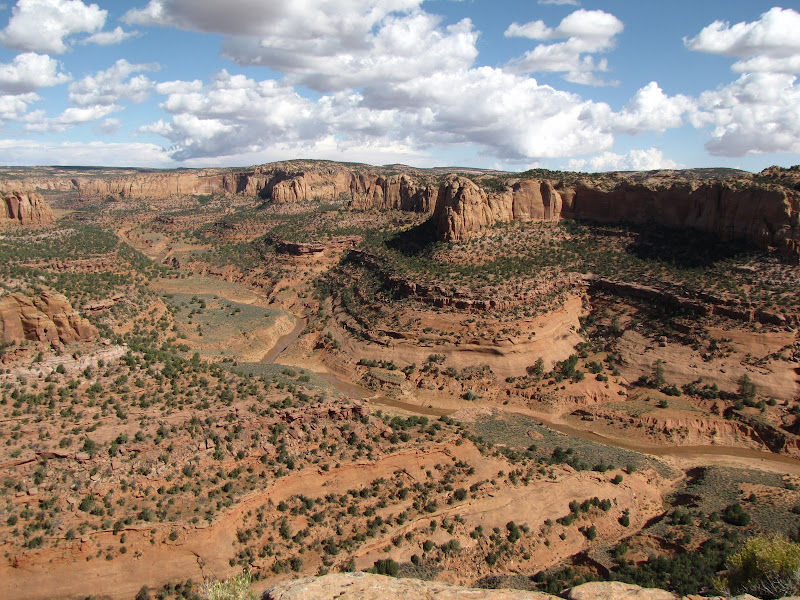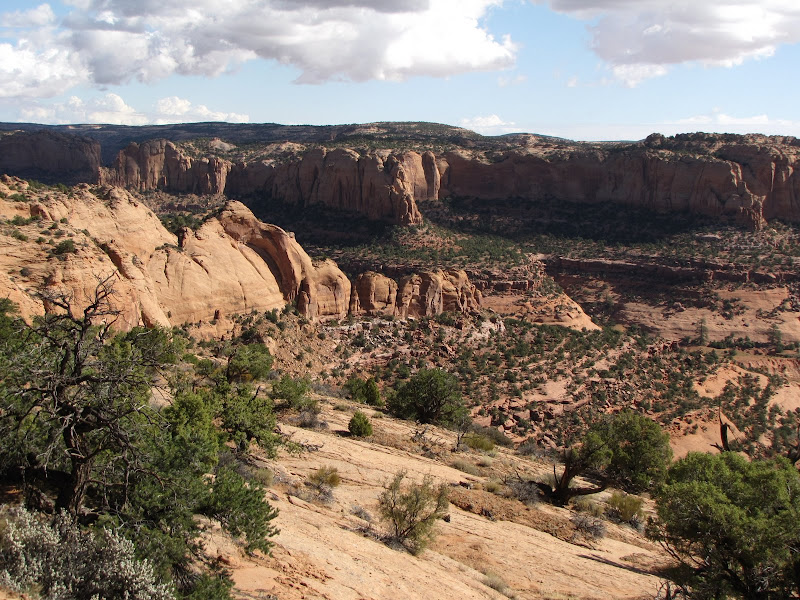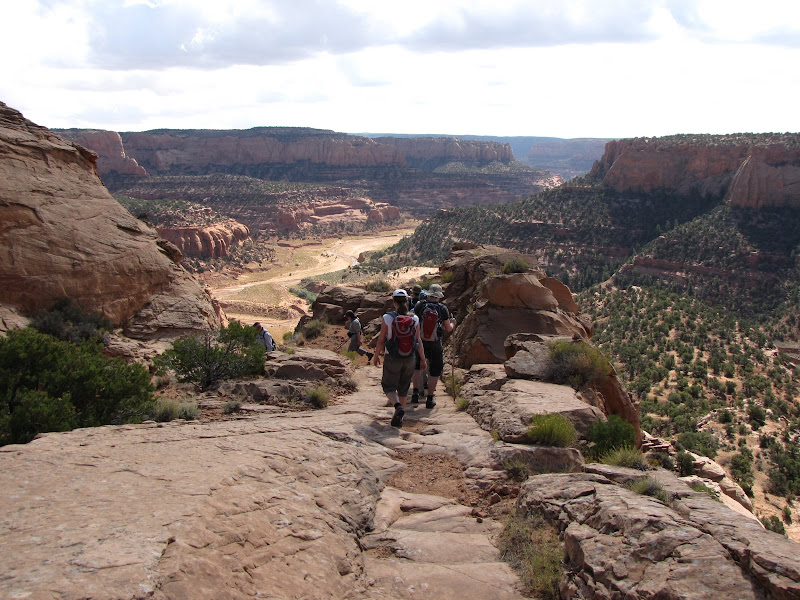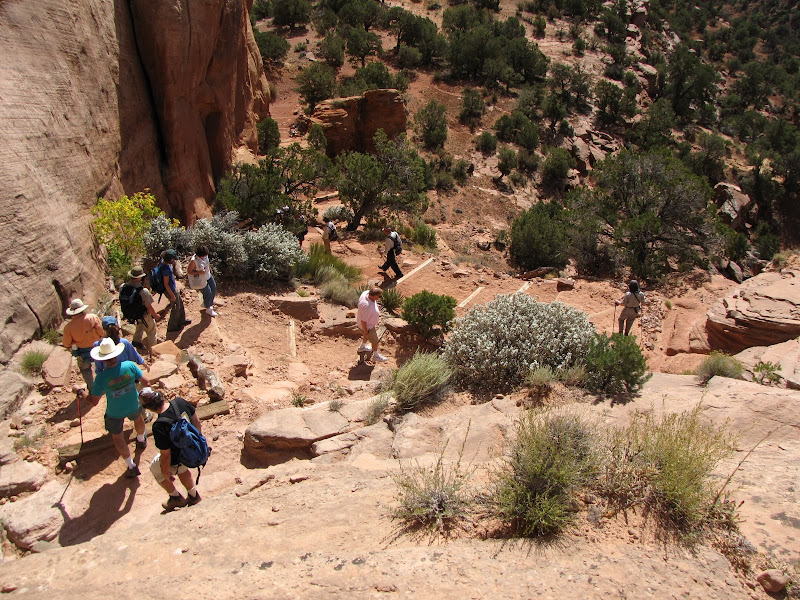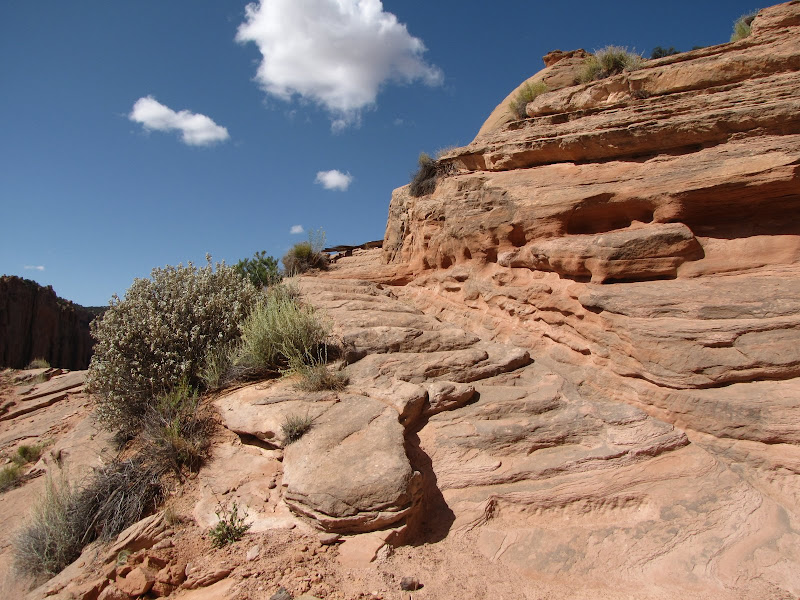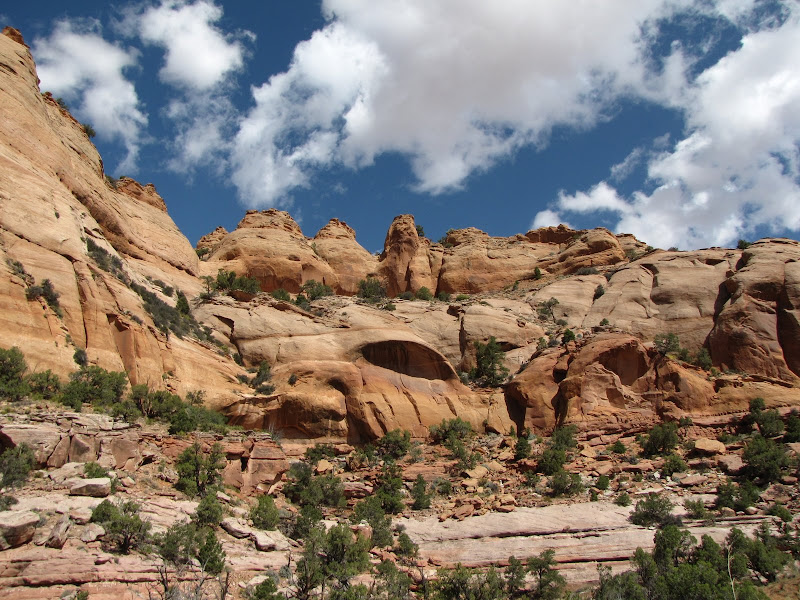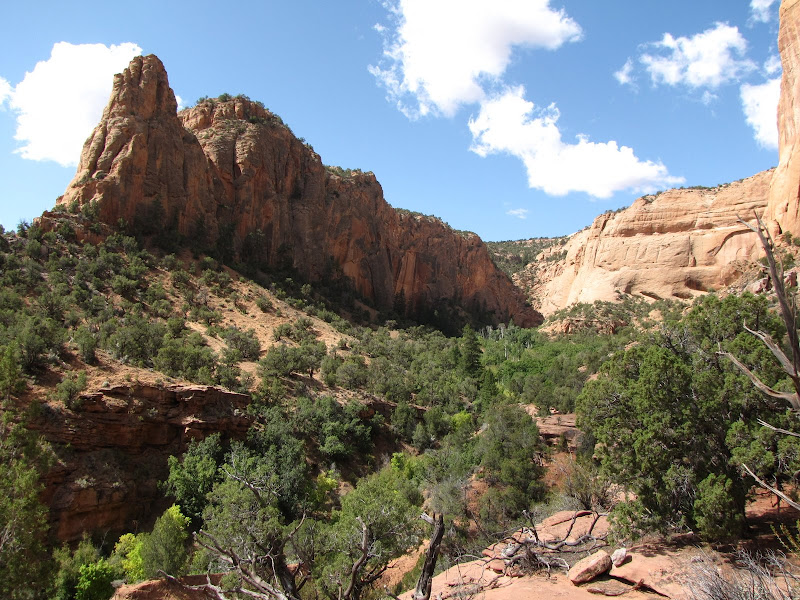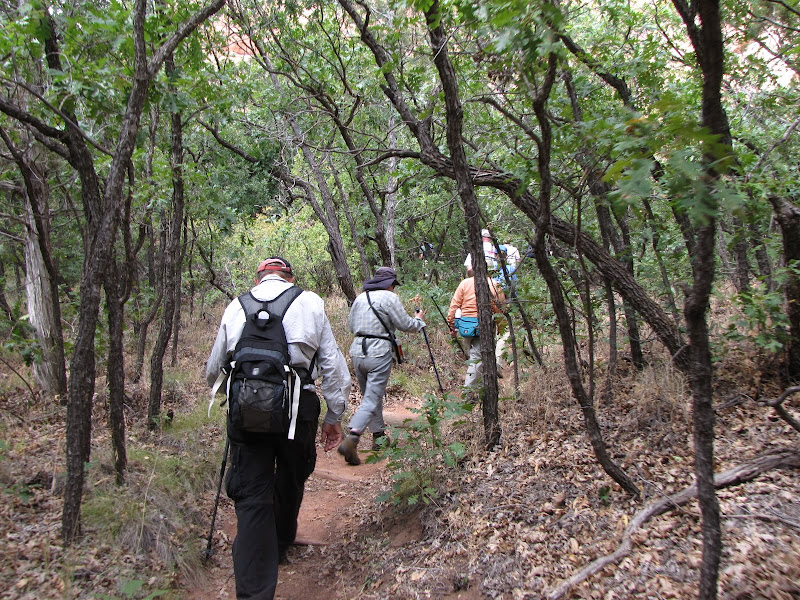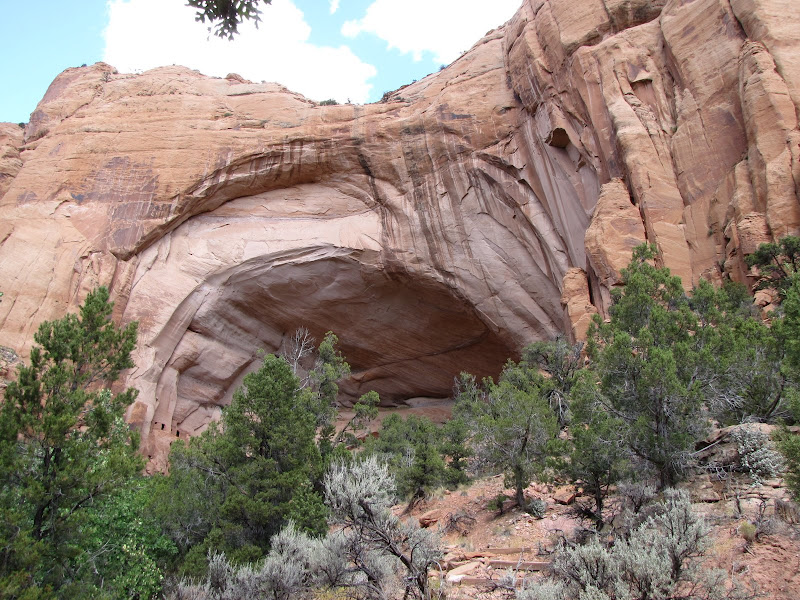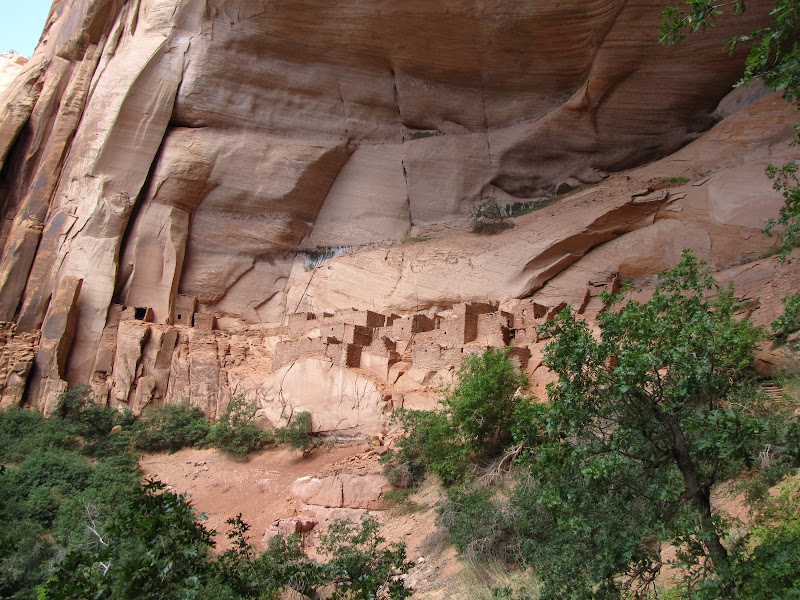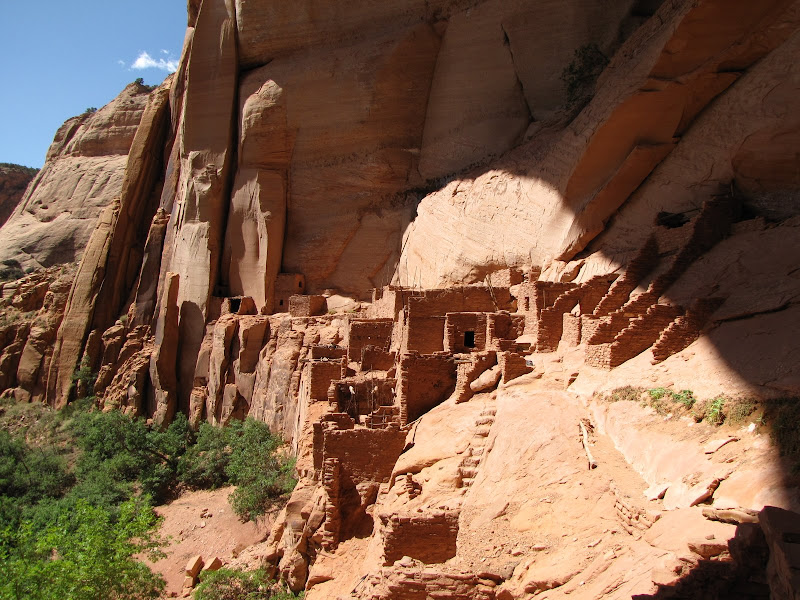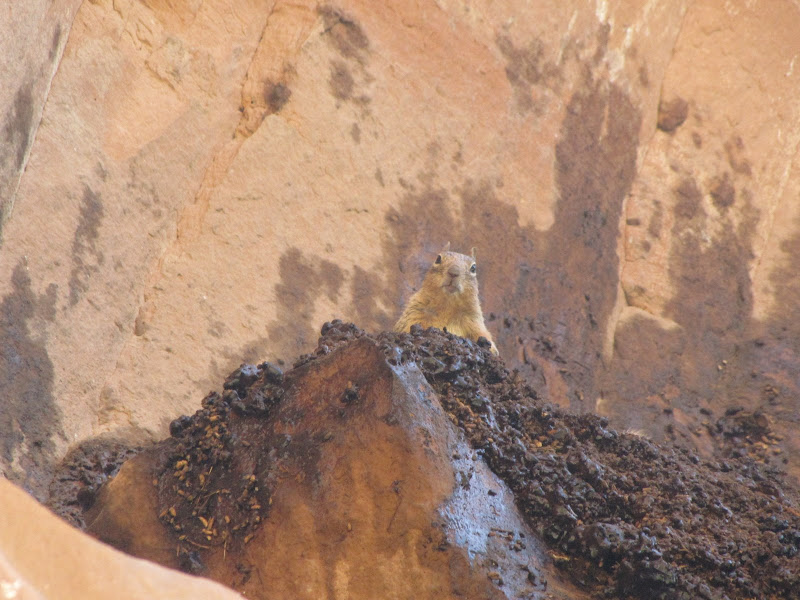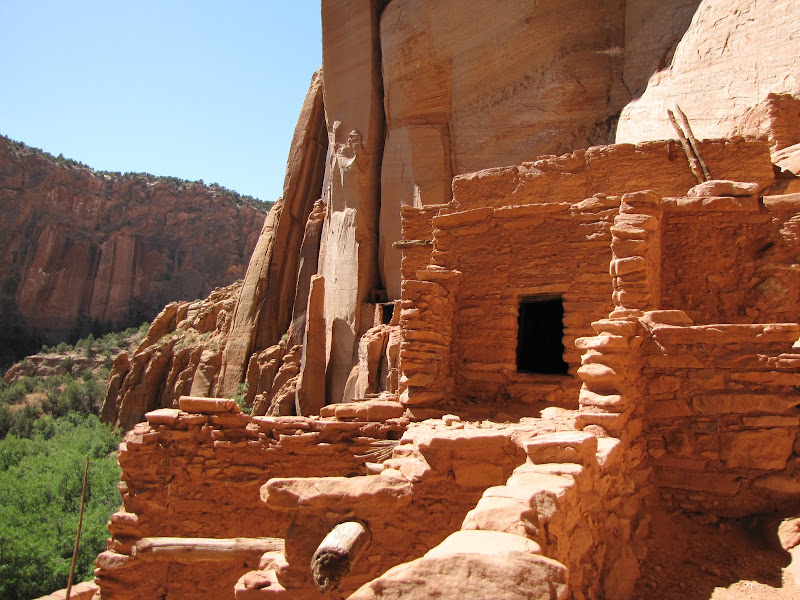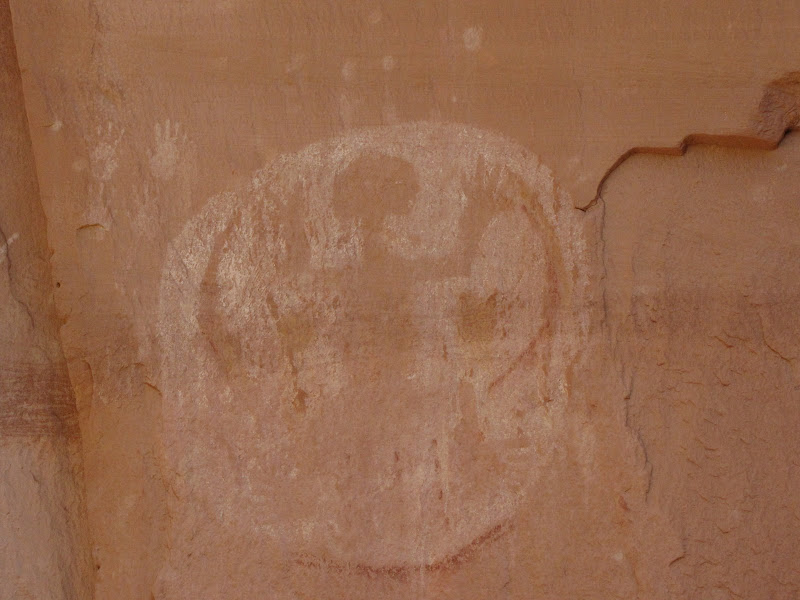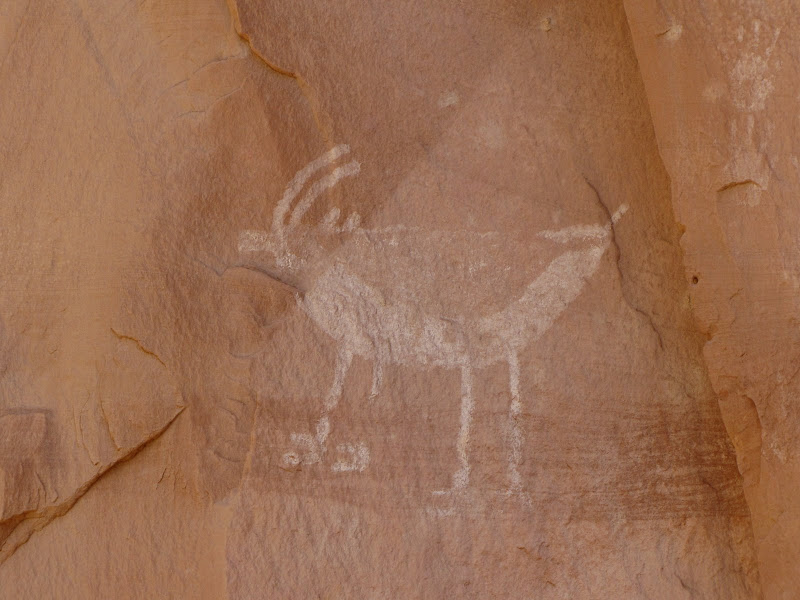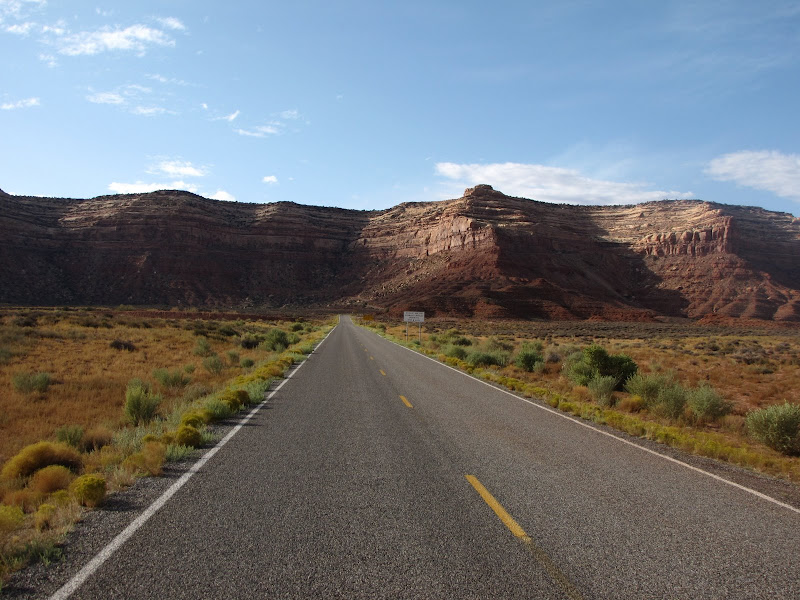 Driving into Utah on U.S. Highway 163 in this remote southeastern corner is a journey into the heart of canyon country. Beginning at the border with Arizona the towering rock buttes and mesas of Monument Valley set the tone for the scenery ahead. Broad, arid basins separate ridges and canyon rims across wide expanses, while in the distance dim blue mountains ring the horizon.
Driving into Utah on U.S. Highway 163 in this remote southeastern corner is a journey into the heart of canyon country. Beginning at the border with Arizona the towering rock buttes and mesas of Monument Valley set the tone for the scenery ahead. Broad, arid basins separate ridges and canyon rims across wide expanses, while in the distance dim blue mountains ring the horizon.To the east lies Colorado and the rugged San Juan Mountains, north leads to the Abajo and LaSal Mountains, and westward over the canyons of the San Juan River are found the Henry Mountains. From the high desert floor to the summits, the elevation change is over 7000 feet, and many different environments exist in this rugged landscape. In between the highs and lows are flat topped expanses of plateaus and mesas, most covered in a blanket of pinyon, juniper, and sagebrush - the ubiquitous southern Utah plant community.
The Colorado Plateau as a whole is a vast region of fairly uniform sedimentary rock uplifted thousands of feet above the surrounding landmass. Within this area are singular and distinct formations created by unique processes outside the uplift, and when the forces of erosion and weathering are applied the result is nothing short of spectacular. Comb Ridge,
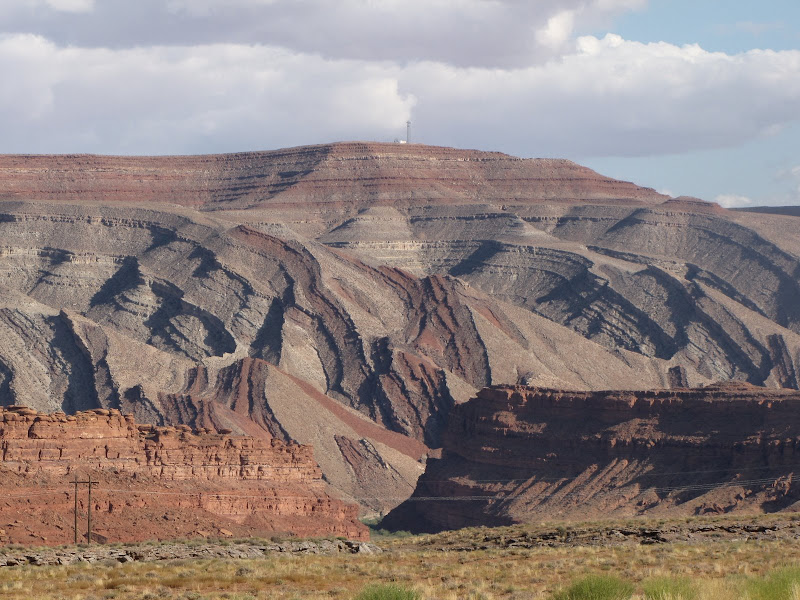 shown here just east of the town of Mexican Hat is one such example.
shown here just east of the town of Mexican Hat is one such example.Comb Ridge is an anticline, or huge fold in the crust of the planet. It stretches nearly 100 miles along a north/south line, rising over 1500 feet above the San Juan River on the southern end. The scale and magnitude of the forces at work here are truly impressive.
Highway 163 crosses the San Juan River at the small community of Mexican Hat. The town was founded in 1882 after oil was discovered in the basin, and a short lived boom led to a population of 1000, followed by decline. Then in the middle part of the last century the town became the center of uranium mining and processing for the region, but hard times returned for the remaining residents after falling demand for yellowcake ore. Today the primary economic force is tourism and river runners who use Mexican Hat as a staging point for trips.
As the highway continues in a northeasterly direction, the curious formation that gives the town its name appears to east - the Mexican Hat, named for the similarity to an upside down sombrero. Though the rock appears precariously balanced it is in fact stable enough to allow for two climbing routes, and in geologic terms will probably appear much the same 10,000 years from now.

Just past the eponymous rock is the junction for Utah Highway 261 heading west over Cedar Mesa. U.S. 163 continues on 21 miles to Bluff and U.S. Highway 191, and eventually to Canyonlands and Arches National Parks - but that's another story. For this entry we're turning north onto 261 towards the Moki Dugway.
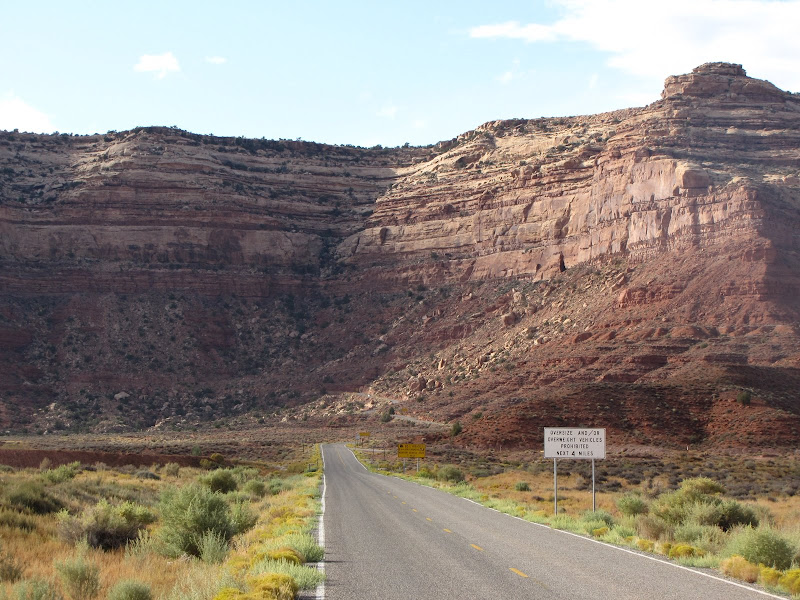
Immediately after making the turn, a large yellow sign warns motorists of hazardous road conditions - "10% Grades, Switchbacks, Narrow Gravel Road, 23 miles ahead." Another warning appears that says "Not Recommended for Trucks over 10,000 lbs., RVs, Buses, Vehicles Towing." Despite the ominous language, only semis and oversize RVs really have cause for concern. In the meantime another junction is coming up - the Goosenecks of the San Juan State Park turnoff is just ahead.
Heading 3.5 miles to the southwest Utah Highway 316 leads to an overlook of the San Juan River. Goosenecks State Park offers no amenities but has outstanding views of a geological feature known as an entrenched meander. The river flowing 1000 feet below loops back on itself several times, and narrow ridges of limestone and shale separate the channel. The picture below is from a NASA satellite image and it shows the twisting course of the river through the canyon.
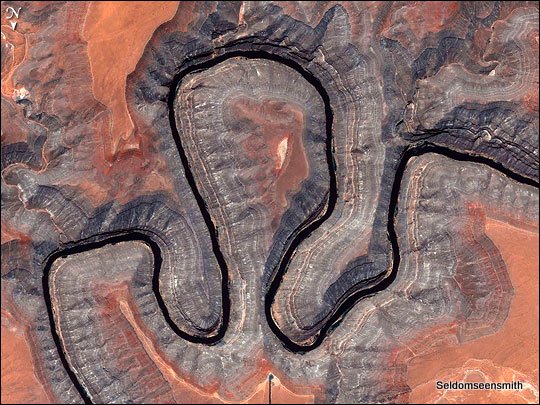

Returning to Highway 261, the road makes steady progress towards the base of Cedar Mesa. To ascend the plateau, a unique trail has been chiseled out of the face of the cliff, using long traverses and tight switchbacks to reach the top. Built in 1958 to access uranium mines on the mesa, the Moki (also sometimes spelled Moqui) Dugway offers spectacular views of the surrounding area.


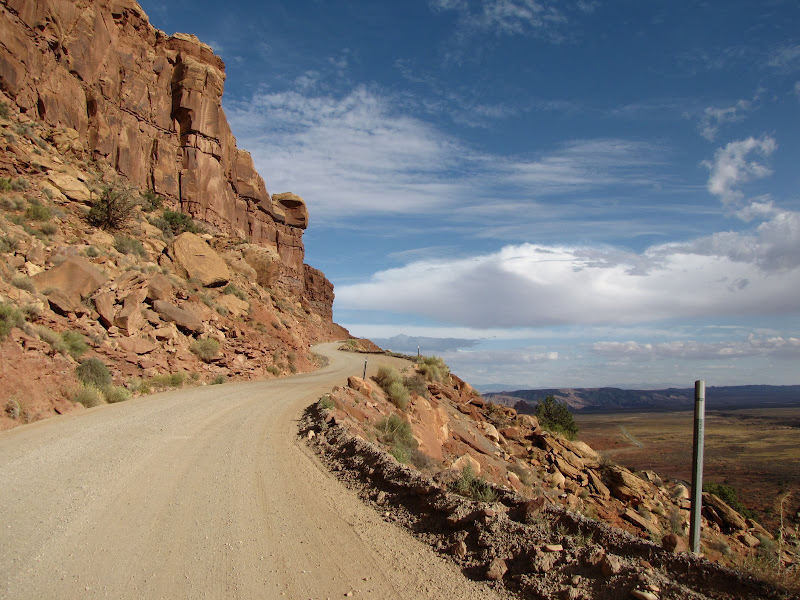
The term Moki Dugway refers to handholds and steps carved into cliff ledges by ancestral puebloan people whose culture once thrived in the region.. In similar fashion Mormon pioneers who subsequently settled this rugged land improved these ancient paths to create passages, enabling wagons and livestock to reach remote areas.
At the top of the dugway, the views are breathtaking. To the east, Comb Ridge and Valley of the Gods lie below. Even farther out the dark silhouettes of the Rocky Mountains appear on the horizon. The southern view reveals the monoliths of Monument Valley, and even further southeast to Shiprock in New Mexico.
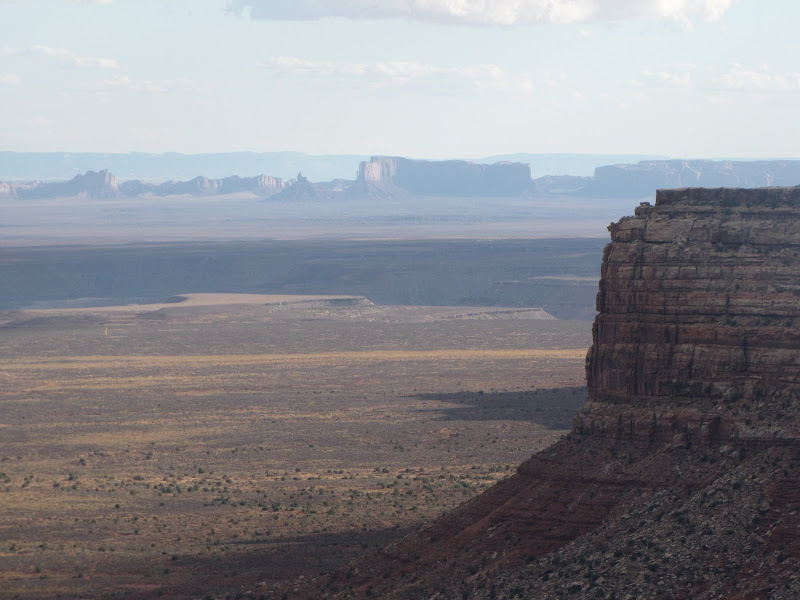
The road becomes paved at the summit, and leads north to Utah Highway 95 and the outstanding Grand Gulch Primitive Area. This BLM managed recreation site contain hundreds of ruins and cliff dwellings located in canyons cut into Cedar Mesa. Access is managed and permits are required for overnight visits as the area is popular with backpackers, especially in spring and fall.
Where the pavement returns a dirt road leads approximately 5 miles southwest across the mesa to Muley Point. This high and lonely outlook provides an outstanding panorama of Monument Valley and the San Juan River canyons. The road is usually kept in reasonable condition, but as with all unimproved routes in canyon country wet weather can quickly render them impassable.



Another worthwhile destination on Cedar Mesa is John's Canyon. This tributary of the San Juan cuts northward through the mesa, and several spur roads head west off Highway 261 or Muley Point road that lead to the edge of the gorge. This extensive canyon system offers ample opportunity for exploration and solitude for the visitor who is prepared.
